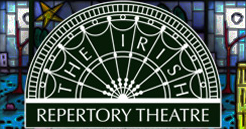US Labor Education in the Americas Project

Letter appeals are an integral tool to fundraising at US Labor Education in the Americas Project (USLEAP). They use them not only to raise money but also to keep donors informed. The organization supports workers who are fighting for a better life for their families and to overcome poverty in Latin America. They support especially those workers who are employed directly or indirectly by U.S. companies producing for the U.S. market.
“We send out four letters a year to repeat donors and an occasional letter to lapsed donors depending on time available,” says Rachel Wallis, Development Associate, and a FundRaiser Professional user. The repeat mailings are worthwhile. “Twenty percent of our donors give more than once a year in response,” she says.
Keeping Letters Vital and Interesting
Letters are used both to ask for donations as weall as to let donors know about the work their money is doing. “In each letter, we try to focus on a different aspect of our work. Thinking of them as organizing tools keeps them more vital and interesting,” says Wallis.
“Our newsletter focuses strictly on the issues. The appeal letters are a place to communicate what we are doing in response to the issues,” says Wallis.
Segmenting for Special Attention
“The letters go out to all of our current donors (except major donors) who didn’t give in response to the last appeal, and haven’t given since then,” says Wallis.
Most of the letters are addressed to “Dear Friend." One segment, however, receives special attention. “We take out the top donors among this group and do a personalized letter, which sometimes includes the amount of the last donation and a suggested upgrade donation.”
To make this kind of segmenting possible, codes are applied to distinguish giving levels and interest among donors. “We have codes for Priority 1, 2, and 3,” explains Wallis. “Major donors are Priority 1. Priority 2 and 3 are more fluid and intuitive.”
Priority 2 donors have given at least $100 or more in a single appeal, and Priority 3 donors have given smaller amounts but indicated greater interest in some way. “Although they may have only given $30 in a single appeal, they may have given several times in a year; included a note with their donation; or in some other way expressed an interest that led us to think that greater cultivation could lead to further donations,” says Wallis.
With these codes in place, Wallis is able to target the groups she wants to handle in specific ways. Major donors are eliminated from the mailing, and solicited personally throughout the year. Priority 1 and 2 donors are segmented to receive the personalized letters. They also receive hand written thank you notes, and occasional special mailings, for instance, issue alerts or special reports.
"Single Most Helpful Feature in FundRaiser”
Wallis and the Executive Director, Stephen Coats, split the work on writing the replies. “After an appeal we may get as many as 30 donations a week that need hand written thank you’s. After a few weeks, it goes down to about 10, then lower. I probably don’t ever do less than 2 or 3 a week.” She makes sure they get done by “having an iron clad schedule for doing them.”
The general thank you’s are automated through FundRaiser. She also uses the thank you feature to help her with the handwritten notes. For her, this feature is tremendously helpful. She calls it “the single most helpful feature in FundRaiser.”
“I set up FundRaiser so that I get the address block, giving history, giving notes, motivation codes, and solicitor for all the donors that will receive a handwritten letter. I print that out for all the handwritten thank you’s. Sometimes I may not get to do them until the next week but there is a stack on my desk to remind me,” says Wallis.
“I’m also able to hand the Executive Director a document that has the donor history, salutation, and donor notes. In a glance he can see what he needs to write his thank you’s. This is information that he doesn’t have any other way, as he isn’t working in the database.”
“FundRaiser is great software with wonderful tech support,” says Wallis.
Resources
8 Steps to Writing Successful Fundraising Letters by Mal Warwick
Pulling It All Together by Larry Weaver
The Year-End Mailing Diversity Dilemma by Larry Weaver



























